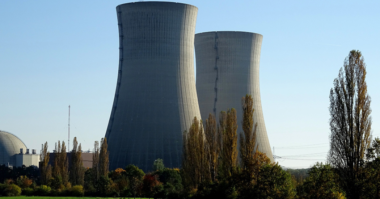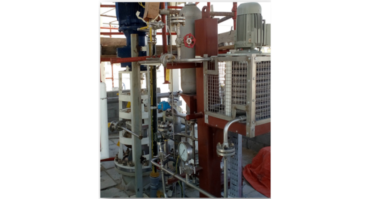Challenge
Analyzer shelters in refineries are temperature controlled (around 20-22 °C) using mechanical temperature switches to ensure optimal analysis of processes and proper functioning of sensitive equipment. However, mechanical switches have some limitations:
The accuracy of temperature switches can have an average error of 3% of the range which would affect the balance of temperature inside the shelter. Also temperature switches can take a longer time than other instruments to detect a change in ambient temperature which can affect temperature sensitive instrumentation.
 ‘Blind’ device: The operator is not able to tell if the pressure or temperature switch is functioning outside of routine maintenance checks. A failed switch could lead to an overheated shelter and damage a host of expensive analytical equipment.
‘Blind’ device: The operator is not able to tell if the pressure or temperature switch is functioning outside of routine maintenance checks. A failed switch could lead to an overheated shelter and damage a host of expensive analytical equipment.
Maintaining the mechanical switches is often laborious and time consuming. The operator would have to remove, recalibrate and reinstall the mechanical instrumentation taking up to 3 hours per switch per maintenance round.
 Solution
Solution
Some of the mechanical instrumentation required updating. Installing transmitters and analog PLC was cost prohibitive. The customer evaluated UE’s ONE Series Electronic Switch and decided to replace the mechanical switches with electronic ones. The ONE Series electronic switch specifically models (All-in-ONE) were selected for the following reasons:
The ONE Series had 6 times better accuracy than a mechanical switch. In addition, the temperature model was fitted with a pt100 RTD, which is highly sensitive and accurate compared to the typical fluid-filled sensing element used in mechanical switches.
Both ONE Series models were integrated with device diagnostics that could indicate whether it was functioning. The devices also had a diagnostic output that could be remotely transmitted to the DCS so that the operator would know when the electronic switch was faulty and immediately troubleshoot it.
The electronic switches require minimal commissioning and maintenance as the set points and dead bands are field programmable, saving more than 70% in maintenance time compared to a mechanical switch. The 1XSWLL model operates on the same 2 wires as a mechanical switch enabling replacement of the mechanical switch without rewiring or reprogram the PLC.
The multi-function 1XTXSW loop powered hybrid transmitter with 2 solid state relays enabled the user to extract the 4-20 mA signal to monitor the temperature trending in the host system and simultaneously use the relay output to activate the beacon on the roof of the shelter in event of high temperature. A single 1XTXSW was able to perform the task of a transmitter, two switches and a gauge simplifying instrumentation and helping the customer to streamline instrumentation inventory.





Comments